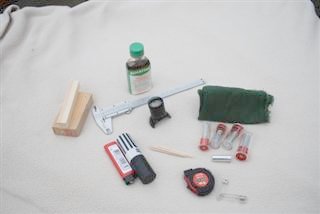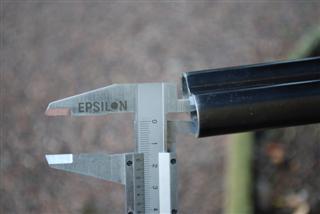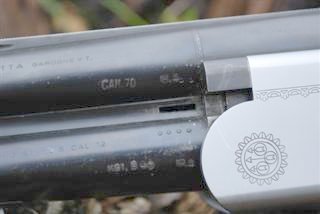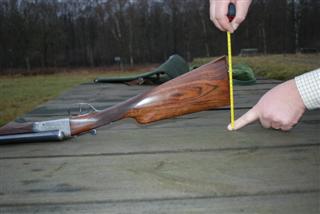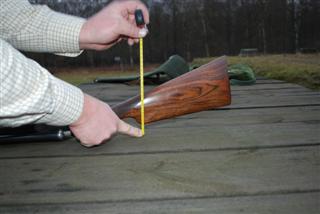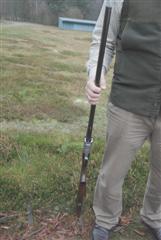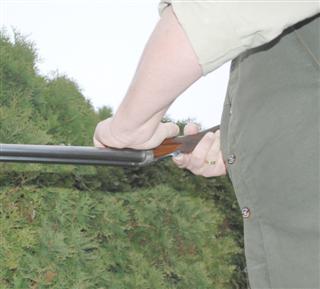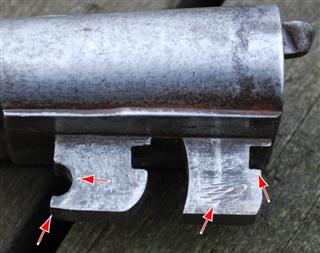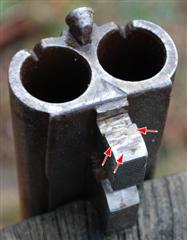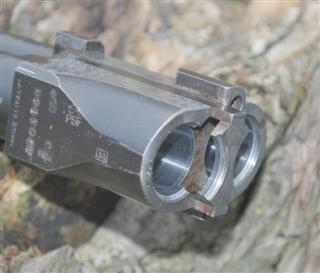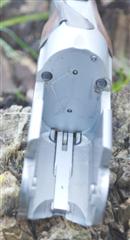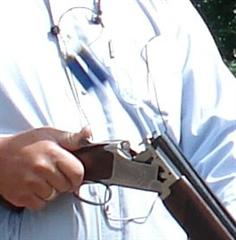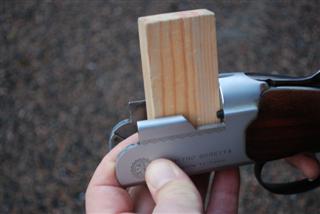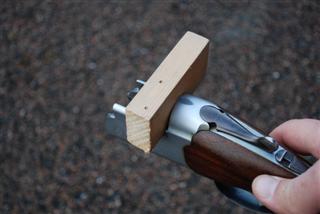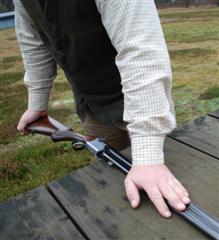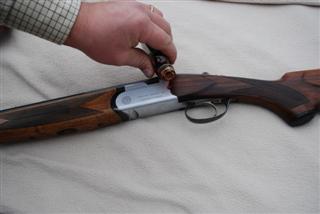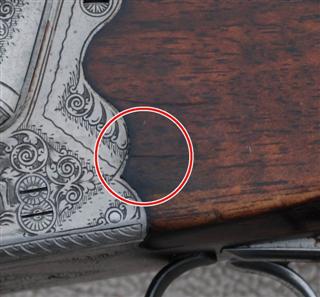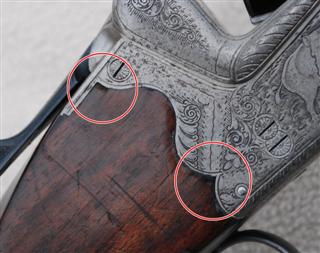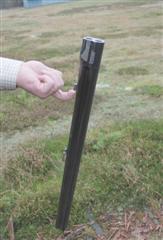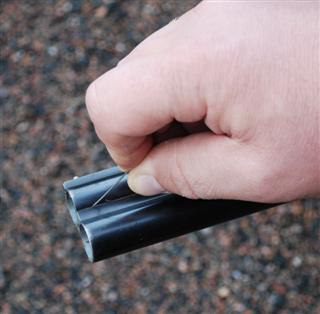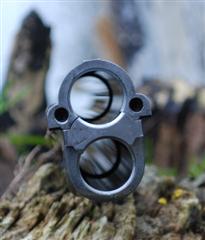|
|
|
How to buy a secondhand shotgunThe majority draws itself in order to buy a secondhand gun since there's always a risk that the used guns has concealed errors. But currently we have very low prices on secondhand weapons of reasonable quality in Sweden, so this might not be a vise thing to do. In the choice between a secondhand shotgun of good quality and a new cheaper shotgun of lower quality would I always choose the secondhand one. If one sets the price in relation to what one gets the quality in the secondhand weapon far more deciding than the fact that the new weapon's has not been used. New produced weapons in lower price ranges are always of poorer quality. So the trick becomes to decide how the use of the weapon has worn it - for all weapons, how well made they might be, can be mishandled to a state close to junk. A weapon of poorer quality will quite quickly catch problems even if well-kept. So if one can learn to see what as happened, one can actually to assert that secondhand gun is safer buy. The risk in order to poor quality will create problems decreases in line with that the weapon is used - and possible deficiencies are disclosed. I belong to them that normally are drawn to the scrapyard like a magnet, and I consistently avoid new weapons entirely because of the big difference in price between new and secondhand guns. So actually, I should perhaps not type this article, since I pursue most of my guns single-handed when I poke about around, very much alone, among old guns stored in the back of the gunroom. What do you need?To find the most common errors on a breech opening shotgun is not particularly difficult and it does not require any costly tools. Most people can quite simple do a fundamental inspection on a breech opening shotgun. In order to to check the most common errors one needs a few things that most shooters probably already have at home. And if it would be the case that one need to buy some detail it will not do a bigger economic cut in your wallet. Particular not if one weighs in the price difference between secondhand and new weapons. So what do one need? - a small bottle guns stock oil - snap caps - one small wood piece approximately 30x50 millimeter - a magnifying-glass or one loupe - a spirits pen and/or a lighter - one safety pin - some tooth picks - a piece fabric - a reel of tape
One caliper or vernier caliper and a steel measure band are also good to have. With the caliper one can measure the muzzle and by that get a view about which choke the weapon has with approximately 1/8 choke per 1/10 millimeter reduction from barrel gauge, a reduction of muzzle diameter with 1 millimeter corresponds as a rule to full choke (1/1). In order to do this assessment it is required to know what the cylindrical part of the barrel gauge, and it is the often biggest problem. In 12 gauge the measure can vary from 18,2 millimeter and up to 18,9 millimeter, on older weapons one often find barrels that measures 18,3 millimeter and on newer guns up against 18,5 millimeter. On weapons with overbore one can even find bigger bores.
Relative often stands the measure stamped on the barrels, on weapons that are relatively new is the measured and stamped in millimeter, but also inch occurs. If one have a crumb bad luck the gauge is measured in calibers i. e. for example 13/1 which is 0.710 inch or 18 millimeter.
To quickly measure the stock measurement is an advantage since one then direct can see if the weapon is interesting or totally wrong.
Off face barrels and other problemsWhen we speak about breech opening guns is their weakest point the just fact that they are broken around the point that actual is set for it the biggest strain. And the result of this weakness is that a play arises between barrels and action or barrel lumps and action. The play can be on several places and to arise off various reasons, the reason for the play to arise from different reasons, the things you will have to do is even more divers. But the most important thing to check is to check if the barrels is off face when the gun is closed - the term “off face” is very good and describing for the problem. The problem arise when the bolt/lugs no longer is properly adjusted to each other. The play can be one of two - axial play or radial play. Or in bad cases both. Radial play is when the barrels are of face length wise. The reason for this is when the bolt is frayed, and the cure is to change the bolt - if possible. Axial play is when the barrel lugs no longer are as tight to the action as they used to be. The things one can do here is more complex and is depending the construction of the gun. To check this there is three rather simple test to perform: Cock the locks, remove the forend and take a grip on the barrels and shake the up and down. If there is a play you will feel it as small clicks in our hand.
Turn the gun upside down, put the toe in our arm pit, open the lever and shake the gun sidewise. Any play is now easily recognized with some practice. For a small warning is in place here - this is a test that might need some practice to be sure of the result.
Blacken the parts that holds the barrel in the action (on a side-by-side it’s the lump/lumps) with the lighter. Assemble the gun and close the gun. Check that the there is no uneven marks on the parts. There are some dirty tricks that can be used to make play disappear. One is to beat up the lumps with a hammer so that teh gun seems to be tight and in good condition, but this type of maintenance or repair will not last for long is the gun is used.
To repair play is normally never impossible or expensive as long as the play is reasonable small, if it is so big that it is easily seen - it might be expensive. Any play should be reflected in the price. Most guns has a small radial play - which can be accepted, any axial play should never be accepted. What does these things say?When one check a secondhand gun one tries to find tracks of earlier owner's care or lack of care. One of the most sensitive points on shotgun is under the ejector/extractor. Any dirt under the ejector/extractor apart from a thin layer of oil will force the barrel and action apart when the gun is closed and a all that is needed to create a play has be created. Most shotguns with barrels that is face off have not become loose because any normal use, well maintained the gun will in most cases stand for a lot more than the gunner. But lack of maintenance will kill the gun very very fast.
In order to check the quality how well the gun has been maintained a toothpick is very useful since it will get to most places and it will never leave any marks on the gun. Firing pinsFiring pins and ejectors are among the most commons problems one find on breech opening guns. And for firing pins the problems is normally one of two: pins that is broken or damaged tips. A broken firing pin is easily detected and can normally be easily replaced, the reason for this is very often the fact the the firing pin wasn't properly fitted in the action in the beginning. When a new one is fitted make sure that it is properly fitted.
If you buy a gun of some better quality from a well known maker spare parts are normally easy to get. But to fit them into the gun is not something that one shall try to do on your own if you don't know how to do it. For older guns or guns from makers that has closed down there is normally no problems for a competent gunsmith to make new parts. But the cost can be considerable higher of course. If the tip of the firing pin is damaged it has normally been damaged when the gun has been opened (if the firing pin does not move easily) or it has been damaged if a firing cap breaks. If a firing cap breaks hot gases can damage the firing pin and the action face so any signs of metal missing on the breech face must be taken seriously since gases that runs in the cation can make a lot of damage on the locks. Such damages cant be seen less that one remove the locks or for a boxlock remove the stock. If the firing pin cant move easily there is always a risk that the tip of the firing pin is damaged when the gun is opened, this easily corrected in most cases: clean the gun, or have it cleaned by a competent gunsmith. A broken firing cap can be a sign of a firing pin that is to long or poor ammunition quality. EjectorsThere is a lot of different constructions and designs of ejectors, and I can't describe them all in detail on disadvantages of each and every one. But the problems for the ejectors is normally two: bursted or cracked ejektor or cracked ejector spring. To test the ejector one starts with testing them one at the time, check that the ejector is released so late that the ejected shell is free of the action, but one should not need to use force on the barrels to the barrel stop to release the ejector. When both ejectors is released the shells shall be thrown at the same time and approximately to the same length. A rather easy test is to hold the gun and open it, it the shells lands on the same approximately same spot at the same time the ejectors is correct.
Spare parts for ejectors is almost the same for firing pins, but with teh difference that larger renovations on ejectors is quite more expensive. SpringsTo check how blade springs functions is not difficult – either they work or they don’t work at all. To check helix springs becomes more tricky since they can to burst but nevertheless seem to function to some extent. How to check the spring for the toplever might be somewhat tricky, but a toplever with no return is wrong. But how to check that the spring is good enough? After some weapons one learns how hard obstruction the spring shall have. One should be careful with guns that uses the toplever so cock the locks, but these guns are rather unusual. The spring for the locks are rather easy to check, use a piece of wood and fire the locks. The pressure marks in the wood should be round and equally deep.
You can use your thumb if you’re not sensitive for pain. Release the locks as you press your thumb against the action face, if the pain makes you jump – the spring is normally fresh. StockThere are few things that makes a gun look bad as a mistreated stock. On the other hand there are few things that might be so complicated to correct as stock with the cracks on the wrong places. A ugly stock that is good is on the other hand one of the easiest thing to correct for an amateur. By this we can now leave the outer appearance of the stock and concentrate of how to detect the inner parts, from the outside. Fibers that rises where the stock rests at the action is a very clear sign of the fact the stock most likely not correct attached to the action. Place a few drops of gunstock oil where the action meets the stock and place the gun on a desk. Hold the barrels and action to the desk and try to bend teh stock. If the stocks moves against the action oil will disappear or rice.
On many older guns one can see that the wood raises against the action on more than a few spots. The reason for this is that the wood gives in for a long time of beating or that the wood is destroyed by mineral oil. To correct such problems can be rather complicated and expensive, the stock maker how corrects this must be a very competent one. And this is the reason why you should keep our gun standing on the barrel end rather than teh stock. Any oil will in that case move forward away from stock.
The reason for the fact the the stock might move against the action might be many different ones, the easiest is that the stock bolt that holds the gun together is not correctly tightened. On the other hand to just tighten the bolt on a gun that has a crack that is not seen is only a way to hide the damage. SafetyTo check the safety is rather simple. Cock the gun, put safe on and try to fire the gun. One shouldn't try with more force than necessary, but one need to use some force. Then put the safe in the firing position - the gun shall not go off before you pull the triggers. If there as a difference between the triggers (on guns with two triggers) then it it’s recommended to have the gun checked by a competent gunsmith. There’s normally a small difference between the first and the second barrel - normally the first right/upper barrel has a lighter trigger pull. Single trigger guns must in some cases have a simulated recoil before the system changes barrel. The other test is to cock the gun, put the safe in the safe position and then bounce the gun in the floor. Not so hard that you destroy the heel but try to simulate the recoil or a dropped gun. When the gun is fired the click should be as normally, it the click is weak there is a large risk that the the tumbler is resting at the safety hatch. BarrelsGuns with folded barrels are normally better than guns with barrels that only are connected on a few points. But folded barrels can is some cases get loose. The check this one can use a needle along the rib. This requires some practice, but once learned one can quickly feel and folding that is not good. An other technique is to “hear the bell in the barrels”, hang the barrels in one of the lumps and nock it with something hard. If the folding is ok, the tone should be clear and sound for some time. If not, some of the folding is loose. If the barrels are loose from the rib, one should remember that the cost to refold them again is in approx. 500 Euro, the the barrels needs to reblued as well. So this is not one normally performs on a cheaper gun.
Dents on the barrels are quite common, and in most cases easily pushed back as long as they are close to the rib. Even small dents can easily be seen in a clean barrel if the barrel is pointed against a white well lighted surface. Rust pits are not anything that makes the gun unsafe, as long as they are not deep or very big. But once there they never leave so if the barrels have pits one must be quite picky with keeping the barrels clean. Sometimes one mix pits with remaining plastic from the wad. But pits goes in the barrel, plastic remains goes up from the barrels and makes a shadow.
A shotgun barrel has one big advantage over rifle barrels. The barrels normally never wears out by shooting. A shotgun barrel normally withstand a lot more than the rest of the gun, and that is enormously more than a normal human being would withstand over a lifetime. Sometimes one can hear that a barrels has “lost the capability to kill”, but I have seen quite a few guns in my time. And there are no such things as a worn out barrel that has no “death” when it comes to shotguns. Guns with such problems normally is used with wrong ammunition (some older guns does not like plastic wads and throws very poor pattern with such cartridges), or one should look at how the shooter uses the gun. As WW Greener put it: there’s no substitute for putting the pellets on the target. So if the pellets doesn’t hit the bird, it can’t be killed. And poor pattern can miss a bird easily - even if all shooting in other terms is correct. Test firingNow, but not until now we are ready for the firing range. And the only things ewe need to test is that the barrels put the pellets on the same spot and that the choke is what we expects - if the gun is a fixed choke gun. To check that the barrels put the pellets on the same spot is rather easily check on 15 to 20 meters. Shoot at either a test target or a plate, check that the center of the pellets is at the same spot. With the ammunition you intend to use. How much difference one should accepts is a question that is hard to answer but personally I accept 10cm or less, more than 30 to 50 cm should be avoided. Most guns handle standard loads, but one must understand that a double barrel shotgun has to obey the same physical laws that a double rifle. The result is a question of the relation between the barrels, so one must check with the ammunition one intends to use. Choke is measured on 35 meter in a relation between how many of the pellets that is located with in a 30”/75cm circle. It may differ more than one 1/4 between different loads. So if the choke is not what you think you need, try some other types of ammunition. FinallyThese test here can’t give a perfect guarantee that the gun is good and will give you a life long service with no problems - far from that, but with these tests you can sort out more than 90% of the guns with problems or a least give you some arguments to discuss the price. For the one that should by his or hers first gun with a limited budget: do not make this a rocket science. Choose one or to well known makers, and some rather popular models from these makers. Avoid unknown makers or unknown models - even if the price is really good. For the more experienced buyer with more knowledge: remember that patience is the most important things a buyer need. See you all in the scrap bins!
Copyright 2015 © shotguns.se Last update: 2015-01-14 |
